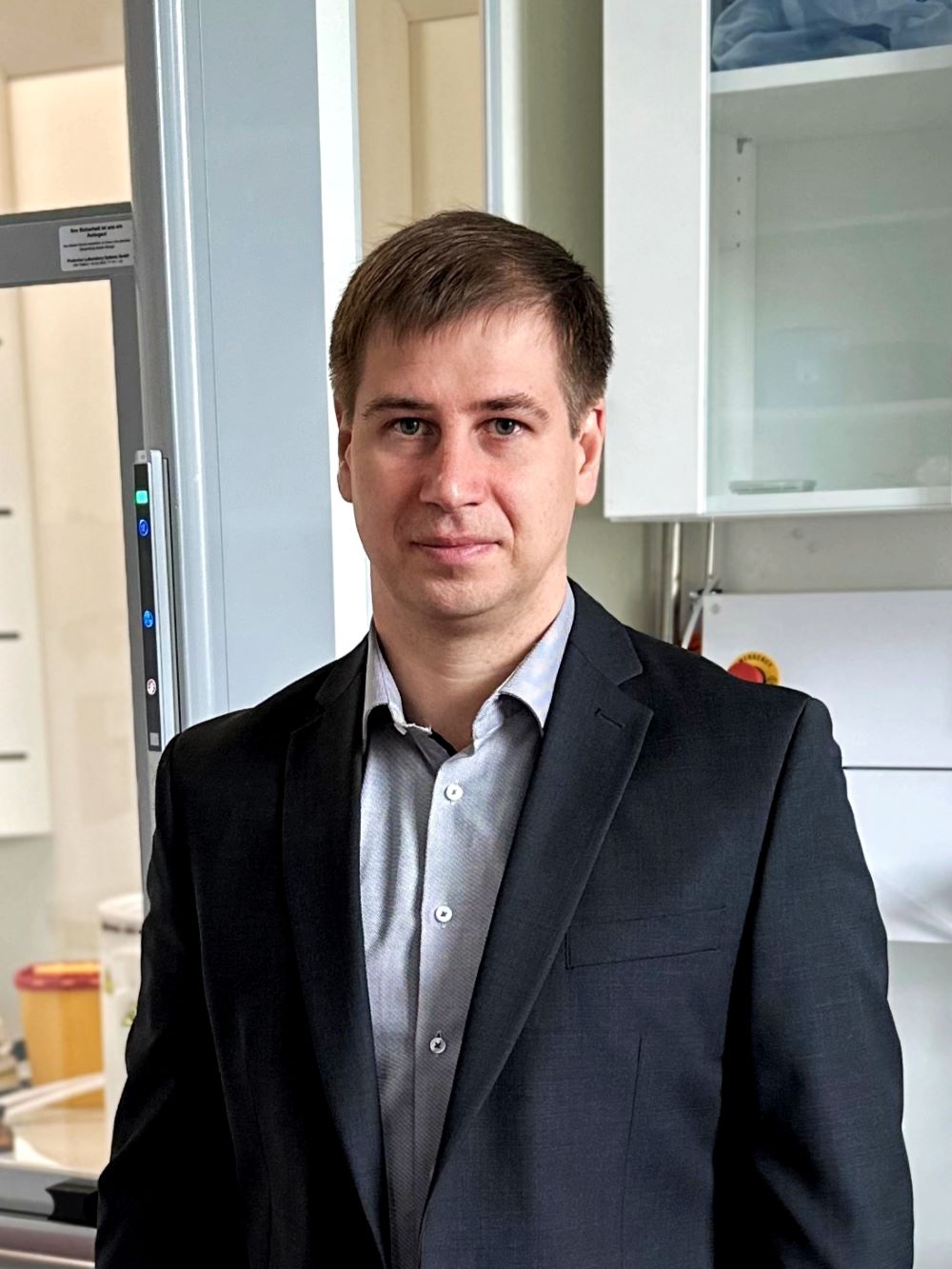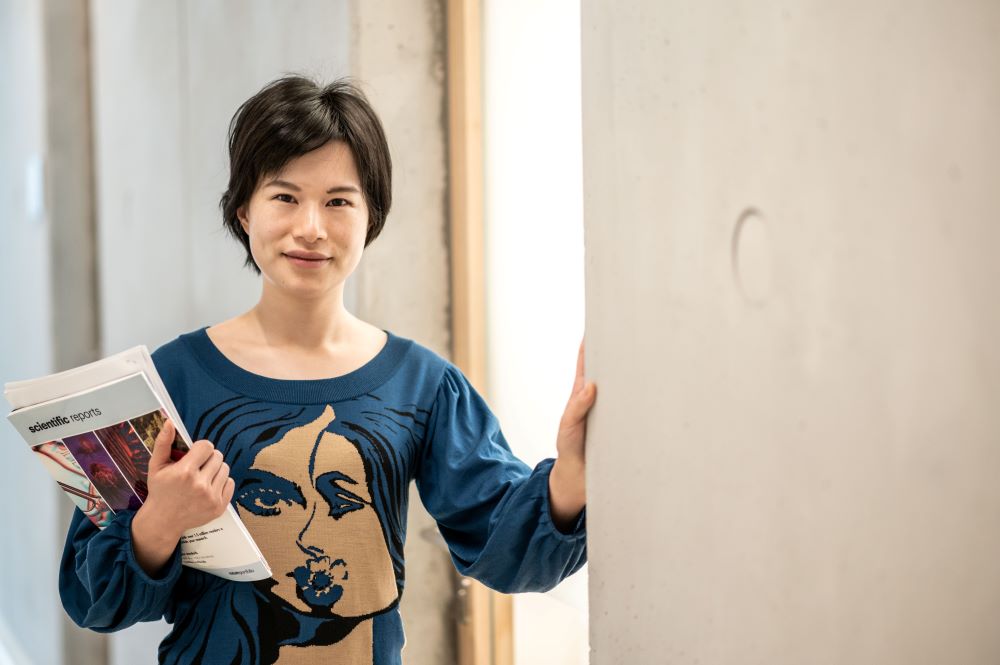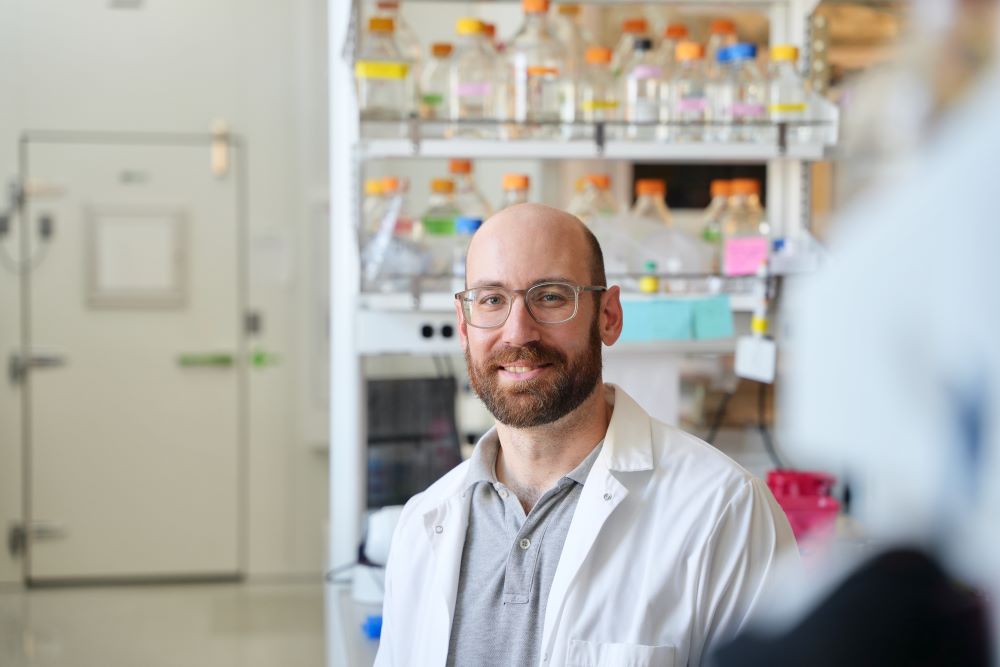September 5, 2023
Three Young ISTA Researchers Win ERC Starting Grants
EU funding for Hryhoriy Polshyn, Bingqing Cheng and new ISTA Assistant Professor Florian Praetorius
Researchers of the Institute of Science and Technology Austria (ISTA) have won ERC Starting Grants of, combined, nearly 5 Million Euro to conduct their research. These prestigious grants by the European Research Council (ERC) help researchers at the beginning of their careers to launch projects, form teams and pursue their best ideas. In a way, all three of them are working on “construction” – of novel materials and of protein assemblies. In the long run, these projects could lead to applications in photovoltaics, planetary science, vaccines, and new types of electronic devices.
This year, researchers in Austria have received 19 ERC Starting Grants, ranking the country eighth out of 24 countries that have received such research funding. ISTA makes an important contribution to this: Since the Institute opened in 2009, an impressive 47% of applications have been successful. So far, the Institute has already hosted 72 of the prestigious grants by the European Research Council.
Two of the three new grants will be used to create and extend new research groups at ISTA, lead by Hryhoriy Polshyn, who joined the Institute in June 2022, and Florian Praetorius, who will join ISTA in early 2024. The third ERC Starting Grant goes to ISTA research group leader Bingqing Cheng. All of the scientists’ projects are related to the construction and use of novel materials.
How do electrons behave in 2D materials?
Hryhoriy Polshyn, originally from Ukraine, did his PhD in Physics at the University of Illinois Urbana-Champaign, before working at the University of California and eventually joining ISTA as Assistant Professor in June 2022. He will receive 1.83 Million Euros to work on “Orbital Chern Insulators in van der Waals Moiré Systems”. His project focuses on the behavior of electrons in graphene and other 2D materials. By stacking together atomically-thin crystals of these materials, one can achieve unprecedented control over their properties.

Polshyn explains: “Suppose we stack two layers of graphene together with a small relative twist between them. This will produce a moiré pattern – a moiré superlattice, as we call it. These moiré superlattices can have a dramatic effect on electrons – they slow them down and make them strongly interact with each other. By using this trick, we can engineer novel electronic states and then study their emergent exotic properties. In particular, we are interested in topological electronic states. The experimentally observed properties of such topological electronic states are very fascinating and could become the foundation of conceptually new electronic devices and new types of qubits!”
Polshyn is convinced that harnessing the properties of topological states can lead to a technological breakthrough. “What’s exciting for me as an experimentalist is that, because of the complexity and richness of these topological states, even my theoretical physics colleagues cannot predict what exciting surprises this system holds for us.”
Can novel materials be made or not?
Prediction is in fact a crucial aspect to the second project recommended for funding by the ERC, called “ab initio PRediction Of MaterIal SynthEsis (PROMISE)”. It has been submitted by Bingqing Cheng. Originally from China, the 32-year old scientist got her PhD in Materials Science at EPFL, Switzerland, before working at the University of Cambridge and eventually joining ISTA in September 2021 as Assistant Professor. In short, her project deals with the fact that quantum-mechanical calculations can predict the properties of novel materials, but cannot predict how to make them. She and her group aim to fill this gap.

“Ab initio simulation techniques have evolved to the point that we can reliably predict many properties of materials before they have been synthesized. This paradigmatic change has led to databases that contain millions of theoretically predicted materials with desirable attributes. However, all this information is of little use if we cannot predict whether these novel materials can be made at all,” Cheng explains. “I will develop a framework based on first-principles computer simulations to predict if and how a material can be made. The proposed approach will boost the success rate of ‘materials by design’, expedite experiments to create novel materials, and thus greatly enhance the speed of materials discovery.”
Around 1.5 million Euros are planned for this project. Cheng underlines that the computational methods created and the resulting software will be developed generic and open-source. “This will greatly accelerate materials discovery. Possible applications are many, ranging from planetary science to photovoltaics to pharmaceutical molecular crystals,” she says.
What is the best way to build protein assemblies?
Medical applications are also amongst the possible applications of the project by Florian Praetorius, who will join ISTA as Assistant Professor in early 2024. Originally from Germany, the 37-year old scientist is currently a postdoc at the Institute for Protein Design at the University of Washington. Before that he did his PhD in Physics at the TU Munich. Already for his PhD, he focused on DNA Origami, i.e. the spatial arrangement of DNA in self-assembling nanostructures.

The project for which he was awarded an ERC Grant of 1.5 million euros is entitled “Design of Nucleic Acid-templated Ordered Protein Assemblies”. He aims to create a new class of designed nanomaterials that will combine the advantages of protein design and DNA nanotechnology: nucleic acid-templated protein assemblies.
Praetorius explains his project’s goals with an analogy: “If you think of designing protein assemblies as building with Lego bricks, the state of the art is that each assembly we build only contains one or two types of bricks in repetitive patterns. But if we want to build a Lego house, we want doors or windows at defined positions. My approach would allow us to introduce specific types of bricks at specified positions.”
He envisions this technology to be useful both in fundamental science and in more applied fields like the development of vaccines that can be used against multiple pathogens. Looking into the near future on a more personal level, Praetorius says: “I am excited to get started at ISTA in early 2024. My research group will also be hiring. Positions for grad students and postdocs are open and the funding is secured also thanks to the ERC grant.”
More details can be found in this ERC press release.



